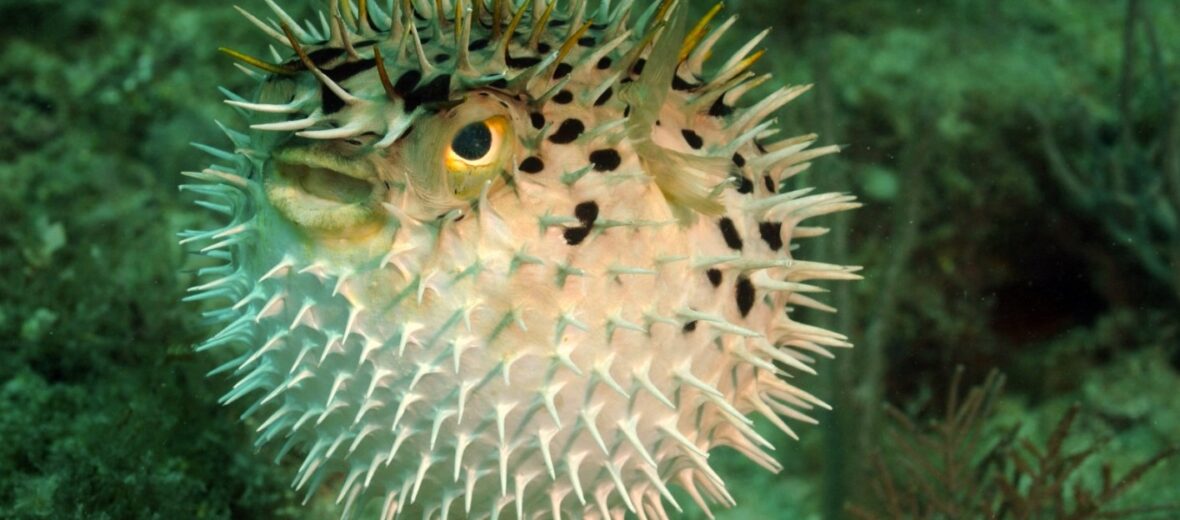
With more than 120 known species, puffer fish, aka Tetraodontidae, are quite diverse, beautiful, slow-moving, and can be deadly! Many puffer fish use tetrodotoxin as a defense and that neurotoxin is up to 1,200 times more potent than cyanide! That being said puffers are, nonetheless, on the menu only if you’re a highly trained sushi chef. This article is on special request.
First the Stats…
Scientific name: Tetraodontidae
Weight: Up to 20 lbs.
Length: Up to 2 feet
Lifespan: Up to 10+ years
Now on to the Facts!
1.) The main defense of all puffer fish is to ingest large amounts of either water or air into their stomachs in an effort to make themselves so large that they can’t be swallowed.
2.) Sharks, like the tiger shark, are the only species known to be immune to the puffer fish’s toxin. They are able to eat puffer fish without any negative affects.
3.) The puffer can vary in coloration from the dull and camouflaged, to the brilliantly colored. It has been observed and documented that the more brightly colored a puffer is, the more tetrodotoxin they wield.
4.) The puffer has two sets of teeth. Two teeth are on the bottom jaw and two up top, which form a sort of beak. They have very strong bites and use these teeth to open mussels, clams, destroy coral, and remove algae from rocks.
5.) Puffer fish can see in two directions at once!
But wait, there’s more on the pufferfish!
6.) During mating, the male will guide the female into shallow water, where she lays up to seven eggs.
7.) Puffer eggs have a hard shell and it cracks open in time for the fry to hatch. When the fry hatch, they are so small that they can barely be seen. They then swim back to the fish community to grow into adults.
Did you know…?
One puffer fish contains enough toxin to kill up to 30 adult men! Certain cultures even prepare these puffer fish as a risky sushi meal that can only safely be prepared by an experienced chef. This meal is called fugu.
8.) It is thought that puffer fish or “blow fish” have the ability to inflate due to their slow movement and lack of ability to escape predators.
9.) Dolphins have been known to tease blow fish in an attempt to get high off their toxin! See the video below for more on this phenomenon.
10.) In aquariums, blow fish have been noted to actually recognize their keepers and come towards the people who feed them.
Now a Short Crop Circle Puffer Video!
A Short Second Video About Puffers & Dolphins!
Also, check out the Critter Science YouTube channel. Videos added frequently!
Want to suggest a critter for me to write about? Let me know here.



